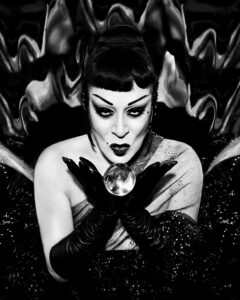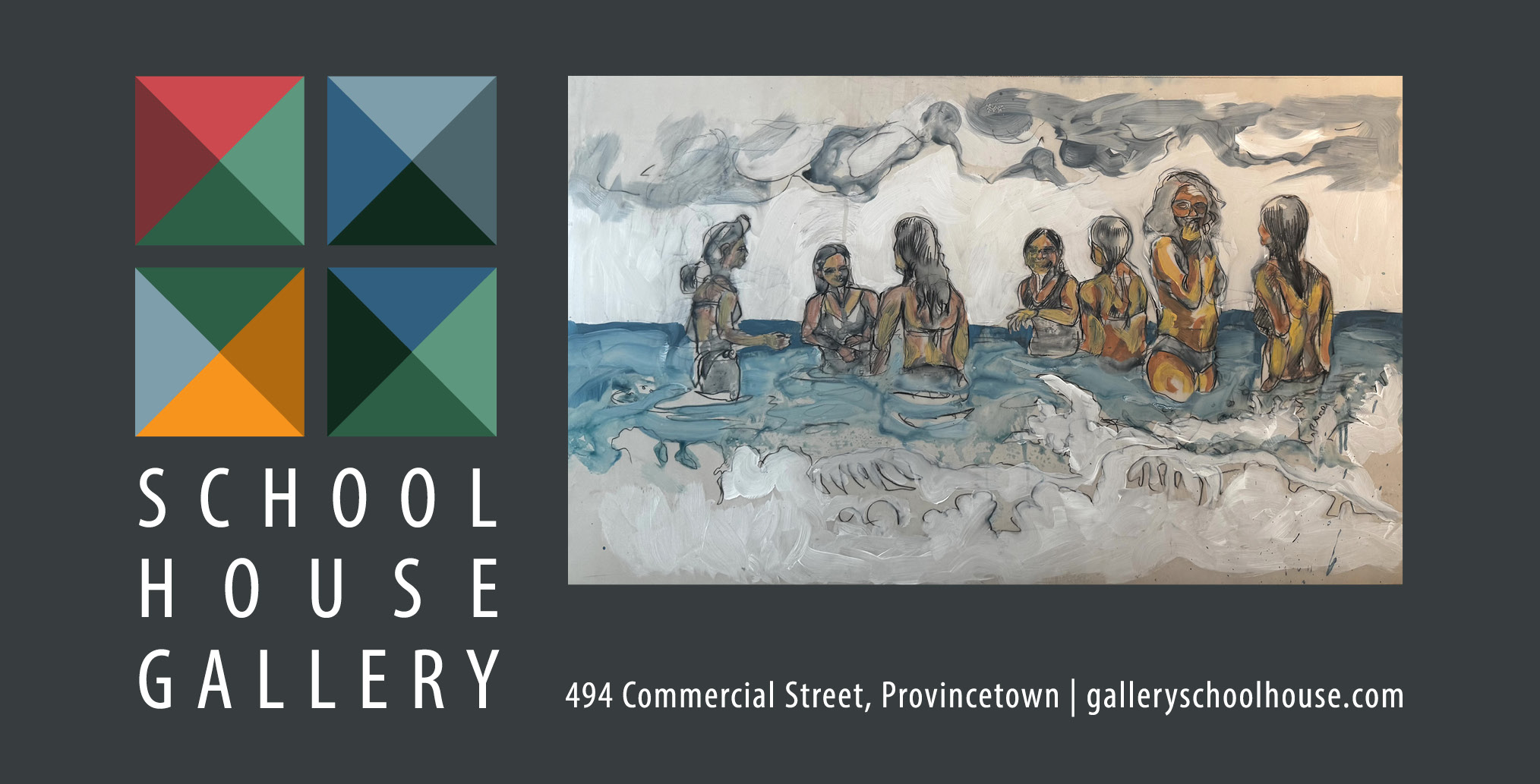It’s nearly impossible to describe a Joey Arias performance to someone who hasn’t seen one. It’s not just a show. It’s an experience: seductive, surreal, unfiltered, and always authentic.

It’s also something Arias has been doing for more than 40 years. “I did drag back when drag was punk, when it was subversive — late ’80s, early ’90s,” Arias says. “Careers were built on being in the moment. You had to be somewhere. You had to do something. No autotune. No tricks. You had to work your ass off.”
That live-or-die commitment to his craft is the throughline in a life spent immersed in music, fashion, and theatricality. “Sometimes, I could cry from how hard I’ve worked to get where I am,” Arias admits. “People don’t know what it means to actually go out on the street, hustle, work the clubs. A lot of these drag queens think they’ll get famous from Drag Race. They rise and fall in a blink. It’s like instant coffee. Stir it up. Gone.”
Arias says he grew up in Los Angeles as a “wild child” who was into “rock and roll, improv, art, writing.” He studied painting in school, drawn at first to Michelangelo and Leonardo da Vinci until a teacher introduced him to pop art and opened a different direction: “With her, I was doing crazy avant-garde stuff,” he says.
That gave young Joey entry to the music world. “In the ’60s, as a kid, I was hanging out with the Mamas and the Papas,” he says. “I’d sneak into Whisky a Go Go on Sunset. You could get away with it if you dressed right.”
It was at home, though, that his love of music truly took root. “My parents played records all the time,” he says. “One day I heard this voice, and my mother said, ‘Oh, that’s Billie Holiday.’ ” Arias was captivated and eventually created his signature act: performing Holiday’s songs in a voice so eerily close to hers it seemed as though he was channeling her.
“You can’t sing Billie, not really, unless you’ve lived that life,” he says. “Life is the school.”
Arias would go on to perform his interpretation of Holiday’s music at venues across the country — including Carnegie Hall and Lincoln Center — and around the world, from Paris and Tokyo to Russia, Germany, Finland, Estonia, Canada, and the U.K.
Today, the idea of a white man evoking Billie Holiday on stage might raise eyebrows. Arias has heard those concerns but never from his audiences.
“Years ago, I was performing at a college with mostly Black students, and I thought, ‘Oh, my God,’ ” he says. “But they welcomed me. Sometimes they think I’m a light-skinned Black woman. But the truth is, I’m not trying to be Billie. I’m not imitating her. I’m channeling what she channeled. That’s why it works — because it’s me. I’m not trying to disappear into her. I’m trying to let the words shine.”
For the centennial of Holiday’s birth in 2015, Arias sang her music with a full orchestra in a performance at Jazz at Lincoln Center. “Simple black dress — gardenias in my hair,” he says. “I told the lighting guy, ‘Don’t light me in white light. Make it pale blue, or golden, or red. Keep it shadowy. I don’t want to be in the light. I want them to hear.’ ”
The road to Lincoln Center was long, with decades of paying his dues. He was fortunate to have gotten his start in New York City at a place where many of the major artists of the day were congregating.
After moving to New York in 1976, Arias landed a job at Fiorucci, the Manhattan boutique of the flamboyant Italian fashion house that had become a hive for downtown scenesters like Andy Warhol, Grace Jones, and performance artist and provocateur Klaus Nomi. The press referred to it as a “daytime Studio 54.”
“I became a fashion stylist,” says Arias. “I was surrounded by all these Italian designers, and I thought that was my future. But I was also hanging out with Klaus.”
Nomi invited Arias to sing background vocals for him on stage. That partnership led to a defining moment.
“Next thing you know, we’re doing Saturday Night Live with David Bowie,” Arias says of the legendary 1979 performance. “David told us backstage, ‘Your lives are going to change after this.’ And they did.”
In the early 2000s, the Montreal-based Cirque du Soleil invited Arias to help anchor a new Las Vegas production called Zumanity, a sensual adult cabaret exploring sexuality and the human form. Arias spent a year in Montreal helping to shape the show as its Mistress of Ceremonies, contributing to both the music and script. His presence gave Zumanity its soul.
A few years later, he collaborated with master puppeteer Basil Twist on Arias With a Twist, the 2010 genre-defying stage piece that blended cabaret with visionary puppetry. “I was the only physical person — everything else was puppetry,” Arias says. “It was very difficult.”
Critics and audiences went nuts. The Washingtonian praised it as “funny, and when it isn’t funny, it’s poignant, and when it is neither funny nor poignant it is merely amazing.”
Arias returns to Provincetown for three performances of a new show called “Black Shiseido” at the Red Room this weekend, and he promises a tight hour of storytelling, originals, covers — and of course, Billie Holiday.
“It’s going to have an homage to Provincetown,” Arias says. “Thank you to this beautiful town and to everyone who’s made it exciting. We’re doing stuff from my last album. Some newer pieces, too. And of course, some Billie, always.
“The message is: life is meant to be lived,” Arias says. “Life is hard. But it’s beautiful. You gotta live every moment like it’s your last breath. Take the challenge. Cut your hair. Take the leap. Live your life. Be proud.
“When you come into that room, it’s a safe haven,” he continues. “Let the music guide you. Let’s dream together. Let me entertain you. Let me make you feel beautiful.”
What a Little Moonlight Can Do
The event: Joey Arias in “Black Shiseido”
The time: Fri.-Sun., July 18-20 and Aug. 29-31, 7 p.m.
The place: Red Room, 258 Commercial St., Provincetown
The cost: $41.50-51.50 at redroom.club



